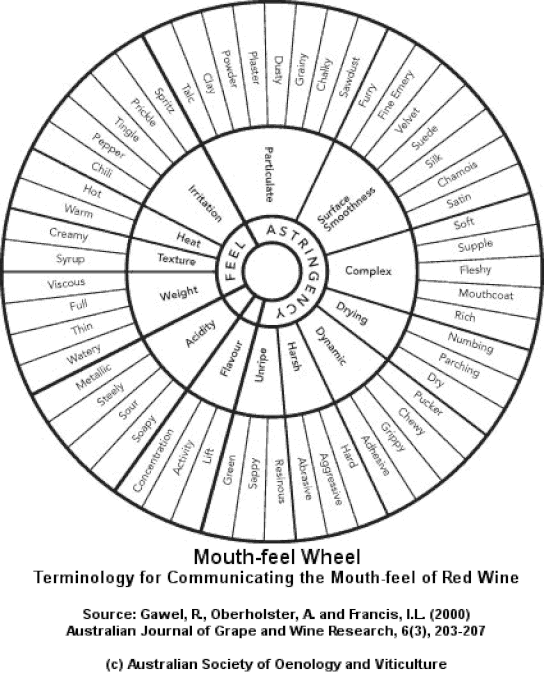How to Taste Wine - Overview
|
A very useful resource in Wine Tasting is the Aroma Wheel. It provides a visual graphic of the different categories and aroma components that one encounters in wine. The terminology used is standardized for use by both professionals and amateur wine tasters. Aroma is identified by the olfactory bulb through inhalation of the wine's scent, and is used to identify the flavors from the grape itself. Bouquet refers to compounds that can affect the flavors, such as sugar, oak, and acid. The Aroma Wheel can be used to identify both a wine's unique favorable attributes as well as it's faults.
Learn more about the Wine Aroma Wheel or purchase one for your home or wine cellar. |
|
Another useful resource is the Color-Of-Wine Chart which is useful in identifying and properly communicating what Color you observe in a wine glass and to use the specific terminology to describe a wine’s Color. A more readable view of the Color-Of-Wine Chart is available at the link below.
Also, terms to describe a wine's Clarity are equally important as it's Color. Terms describing "Good Clarity" include brilliant, clear, and transparent; while terms describing "Poor Clarity" include cloudy, dull, hazy, and opaque. If you would like your own Color-Of-Wine Chart, below is a link to where you can purchase one for your home or wine cellar.
|
|
When tasting wine, literally layers of sensations fill your mouth with each sip.
Structure is the Texture and Mouthfeel, or lack thereof, of the wine on your palate. Through tasting, you can break down those sensation experiences into a few simple, yet connected components; body, alcohol, acidity, and sweetness. We refer to these sensations as ‘Overall Mouthfeel’. Another useful resource is the Mouth-Feel Wheel which helps you to describes the sensations you are experiencing. Most descriptors are related to texture or body of the wine, for example: silky, smooth, velvety and rough. Mouth-feel is influenced by a wine's components; as acidity can be sharp, alcohol can be hot, tannins can be rough and sugar can be thick or cloying. If you want more detailed and in-depth review of Basic Wine Characteristics check out this link ... enjoy |



